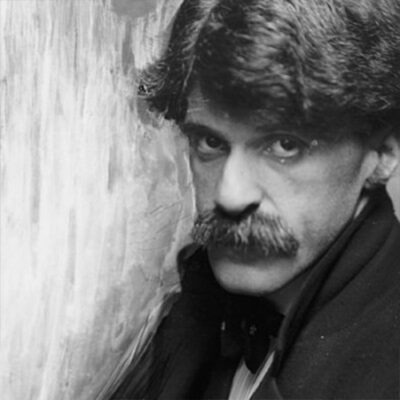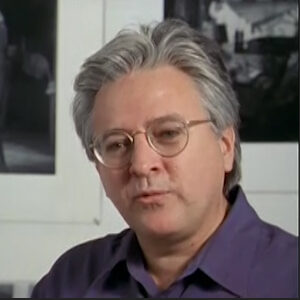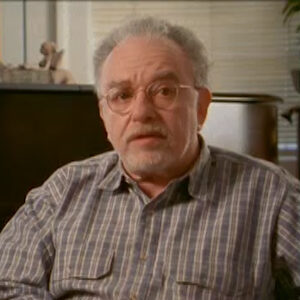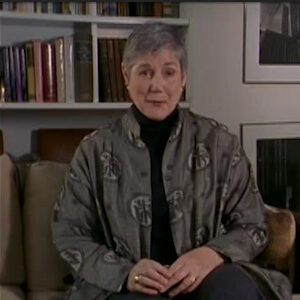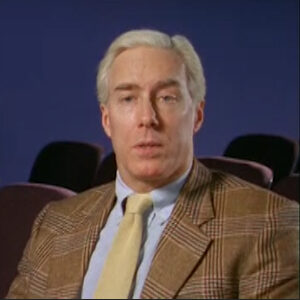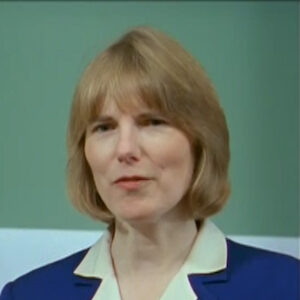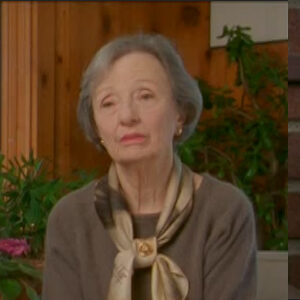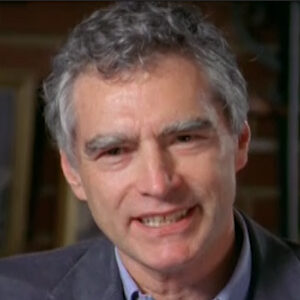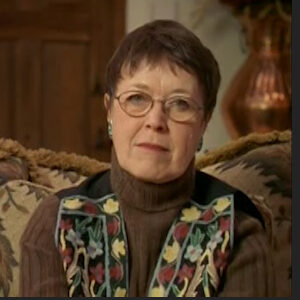Speaker The art you. What was it? What was it like?
Speaker Well, I’d like to preface it by saying that Stiglitz presented himself as.
Speaker I don’t like to preface whatever you want. All right. Do you want to tell you about it? You know, you’re not going to hear my question. So just shoot.
Speaker New York in the 80s, 90s was seething with activity, creative activity. Robert Henry was the dominant figure among the progressives, but there were conservatives around as well. Indeed, they were Henry’s enemies. Conservatives like Kanyon Cox of the National Academy of Design. There were others as well. People like Arthur Wesley Dao, who is a progressive, we would call them today a symbolist. And.
Speaker Just.
Speaker The dominant situation in the New York art world. The dominant situation in the New York art world. Which we would hardly believe today was governed by the academic approach. These people have long since lost their power. But they were the dominant force. And their belief was in classical antiquity, perfect proportions, ancient models, tradition, their best exemplified by the artist Kenyon Cox, who is now seen as the whipping boy for all things academic. The progressive’s came to fight this dominance of the academic under Robert Henry. A dynamic Midwestern character who painted, taught, organized, wrote, proselytized and in effect said, We do. We’ve had enough of the academy and we’re going to stop it. He gathered his friends around him to accomplish this. There were others who were academic, too. But in another direction, I would say the. Interesting alternate direction.
Speaker I’ll come right back. There’s a golf break for everybody. Well, it was.
Speaker This academic point of view, it was fought also by people.
Speaker Done, say.
Speaker And Rob was not the only enemy of the academy. There were others like Arthur Wesley Doe, a New Englander who had been to Paris, into France, to Britain to learn the essences of symbolist painting. There was Whistler, the great hero of the academics, Whistler, who is a prototype for abstract art art that was musical pattern designed and was like music. An argument for obstruction.
Speaker Case, you see anybody?
Speaker Well, wait, Merritt Chase was seen as an academic. He was a specialist in painting fish and he painted fish better than anybody else. And he was. Believe it or not, called an art for art’s sake. Exponent like Whistler, I would call it fish proficient sake. But in any event, Chase was not a major factor in the progressive’s.
Speaker And here’s what I stood for.
Speaker Well, I would be called a progressive who stood for innovation, individuality, everything that he believed was new and progressive in the arts. The only problem is that when contrasted to Stiglitz, his progressivism seemed brother dated. But he was a wild eyed revolutionary for the period from about nineteen hundred to nineteen eight. And in 1918, his colleagues got together to present an exhibition of the eight, as it was called their group, which represented five city painters who painted scenes as they saw them, and three other invited guests who were also at academic.
Speaker What were the subjects? I mean, what was different about what they were doing, the fact that they were painting on the street and what was different about about the group, their subjects and the way they painted?
Speaker The so-called Ashcan School painted just the ashcan city scenes, tenements, slums, all of the kind of subject matters that the academies would not have anything to do with academies would present sunny days, happy people, Ms. Gambling across the countryside and not have anything to do with the realities. So it was a very radical idea at that time for Henry and his group to paint the city scenes as they saw them. Of course, the way they did this was in a style borrowed from France some 30 years before the style of Manet and Corba in the French realist with some Velasquez thrown in the names of some of the patrons.
Speaker Oh, yes.
Speaker Robert Hemingway, of course, was the leader.
Speaker John, give me the name of the ash.
Speaker Right. The ash campaigner’s included Robert Henri, of course, the leader, John Sloane. William Blackens George Lucas and several others ever bitchen. Three others were added onto the group, as I mentioned, but they were not asking painters. So they’re often called, but they’re better. Call the eight. They had an exhibition of the eight of 19 eight, which was the first successful academic show. The reason for this is that they sold paintings. Believe it or not. Which is one of the reasons why they fought so bitterly against the academy. The academy dominated the National Academy of Design, dominated the art world, and made it very difficult for any young artist to sell its work.
Speaker Yes, talk about it a little bit about in in photography and its connection with pictorials, with the little bit about the photography scene and the early 1990s, the amateur scene is a very interesting one.
Speaker They say there’s nothing new under the sun. But I think the role of amateurs in photography in the late 19th century, especially in the 80s, 90s and after the turn of the century, is quite phenomenal. The the art of photography began as a realistic describing recording art. And it was almost a miracle for it to become pictorial, to become like a painting. But precisely that happened in the late 19th and early 20th century. And one of the chief practitioners of this art were the. One of the chief practitioners is one of the chief practitioners of this art where the amateurs, businessmen, doctors, lawyers, professionals, grocery store, grocery clerks and so forth. And they had no axe to grind in terms of finances. They didn’t have to sell or work. And as a result, they were able to experiment. Much like the abstract expressionist in the present century. Kill that the life, the abstract expressionist in the late century, just past experimented without worrying about making any money, because during the Depression nobody was interested in their work. It was very much like this for the amateur photographers.
Speaker There was something about there was overlap at the very beginning.
Speaker There was overlap. Still oil. Shall we repeat? Yes.
Speaker Let me see if I can hear it a little bit stronger.
Speaker OK. I hear you loud and maybe that will overcome some of the lower rates. OK, will do. Yes. I can also pitch it lower. Well, do you want to get away from the lower register?
Speaker I think. Tell me something about about control. What is it they would try to do. Make it look like. What do they want? They try to do the pictorial photographers.
Speaker We’re trying to make a fine art out of photography, which is not an easy thing to do because photography, by its very nature likes to record things. It likes to be an optical medium. So they were forcing photography to become something that it didn’t naturally want to be. But this was not bad. In fact, for many people, it was a good idea to force photography to be an art, a fine art instead of a mere craft. And in order to do this, the photographers imitated paintings, imitated the techniques of paintings and drawings and etchings, and gave dignity and stature to photography, which it had never had before.
Speaker Tell us a little bit about the kind of work that this defense was doing in the early days in New York and how it is. How was his work different from other children of the time? I think it was Stiglitz.
Speaker His work in New York was probably the best of any pictorial photographer, amateur or professional. Had an incredible genius, a marvelous spy, and anything that he touched photographically turned to gold. I don’t mean gold in terms of what it was worth, but gold in terms of its aesthetic merit. Stiglitz was a leader of a small group of pictorial photographers around him who largely imitated his style and who.
Speaker I’m going to rephrase it. No problem. OK.
Speaker OK, Stiglitz was the leader in New York City of a group of pictorial photographers, mostly amateurs, who came to be known as the photo session. Under his leadership. And the idea was to make the photographer make the photograph a work of art.
Speaker An enduring aesthetic object. Not a craft, not a recording.
Speaker Excuse me for a second. Yes.
Speaker And why did you seize on Steichen, you know, as one of his main main photographers?
Speaker Stiglitz and stock and had a symbiotic related relationship. Try that again. Stiglitz and Steichen had a symbiotic relationship. An older man, a brilliant younger photographer with immense talent coming under the wing of the senior spokesman for photography. They seem to support each other, though they were vastly different in many ways. Technically, Steichen was very different from Stiglitz. Stiglitz employed what we call the straight approach and detailed fine focus, etc..
Speaker Steichen wanted to make a photograph into a painting literally, or print or an etching, literally, by carving, scratching, painting on the negative and manipulating the print any number of times.
Speaker In spite of this, the two of them got along and they were both fighting for the cause. The commonality between them is the struggle for individuality may not seem like a very profound idea today because everybody’s individual today. But the idea of individuality in the photograph was central to these people.
Speaker It’s good. Good.
Speaker What happened with Steve, this state seems to get a lot of dissension about who really started the idea of a showing of filling pages and who was responsible for what happened in 91.
Speaker Well, the relationship between Stiglitz and Steichen in regard to the promotion of modern art is an interesting one. Steichen has not gotten enough credit for getting Stiglitz as Stiglitz interested in modern art, but indeed he did. For example, Steichen was largely responsible, if not entirely so. Overdramatise exhibition showing at 291. He had a lot to do with the Picasso exhibition. Soon thereafter. Stiglitz like to promote himself as the be all and end all, of course, of modern art in the early years. Steichen deserves considerable credit for that.
Speaker Actually, since we’re talking a little bit about Stieglitz, his character. Tell us a little bit about about Stieglitz, his character, both his strengths and weaknesses.
Speaker In regard to Stiglitz, this character, I wish I were a psychoanalyst. I’m sure a psychoanalyst would have had a field day with him. I don’t think he ever went to one. Stiglitz was a man of contradictions. He was a brilliant leader, a charismatic personality, a selfless, devoted champion of everything new and progressive in the arts. But he was also a crybaby.
Speaker He was self pitying. A rambunctious, impatient, long winded and in many regards, an unpleasant personality.
Speaker I remember interviewing Georgia O’Keeffe in 1974 asking her about Stiglitz, O’Keefe, of course, being his wife and then widow. And she said, you have to understand that Stiglitz would say one thing is absolute truth in the morning and the exact opposite in the evening. She said that’s the clue to Stiglitz as character.
Speaker Could you talk a little bit about why he had some of the people that he had breached with and why? Why do you think that?
Speaker That these breaks came about with.
Speaker With Walker Woods, with Max Weber, with Waldo Frank. I mean, they seem to have been seems to seek to win a number of breaks, Stran.
Speaker Tell us a little bit about that.
Speaker Stiglitz said breaks with his friends periodically from time to time. Probably this is to generalize every couple of years it was time for a break and he would fight with this person or that person, whether an artist, a critic, a friend, ex friend, what have you. Mostly it had to do with the argumentation that he had on the basis of principle. Stiglitz fancied himself as the authority on everything. And if you did not agree, as Weber did not on certain things, you were a strong ego, as Max Weber, the painter, was.
Speaker Then you either got along with Stiglitz and bent like the straw on the wind or you got out. That’s what Weber did.
Speaker Tell us something about the Armory Show. What was what was the Armory Show?
Speaker Well, the Armory Show took place at the Sixty Ninth Regiment Armory, which is not very far from where it no taping at John Street. It was the largest exhibition ever held in the United States of contemporary art. Up until that time. Thirteen hundred works.
Speaker And it was just a second. Could you just give.
Speaker Can we talk a little bit about the about the Armory Show and the Stapleton’s relations beginning in the Armory Show is the most important exhibition of American art ever held.
Speaker Sorry. I was watching your hand.
Speaker You just just look at me. The whole world is waving. Okay. All right. Well. All right.
Speaker The Armory Show is the most important exhibition of American art ever held. It was held in the Sixty Ninth Regiment Armory Building not far from Jonan Street, where we’re taking this taping this session. And it was organized solely by American artists. No government sponsorship, no grants, no foundations with a belief that American art of an independent nature, progressive American art, should be shown in large numbers. American art is the emphasis. However, the European guests, as they were called, Marcel Duchamp, says Matisse, Picasso, et cetera, were invited as an afterthought by way of comparison. And, of course, they stole the show created great consternation. Stiglitz prepared the world for their armory show in a small way in this little gallery in New York City because he was able to understand the principles underlying these artists before they had come in 1913 to the big show. He was also a sponsor of an exhibition of his own work. 291 photographs. I think it’s very interesting because he said he in words like this, that he would put his own photographs to the test if they didn’t hold up. They were worth nothing. I thought that was a courageous thing for him to do, test his work against the work modernists.
Speaker Tell us something about the reaction to the show. Was it a big success? I mean, what was the public reaction?
Speaker The Armory Show reaction among the public was one of scandal. Most people didn’t understand it, thought it was a sensation troubled by it, couldn’t understand any of the work going on.
Speaker The most famous example was Marcel Duchamp nude, descending a staircase, which was called an explosion in a shingle factory. In any event, Stiglitz was exonerated by the Armory Show, although he himself did not believe in big barn like exhibitions. This one was he knew that he had been on the right track and that he had been proven correct in the direction that he was taking.
Speaker Tell us something about that. It became a kind of a tremendous amount of press. How many people came from public events?
Speaker Yes, it was covered in the newspapers, mostly in a mocking sort of way. But many people came to the exhibition to Mark and actually found something worthwhile.
Speaker So what was the reaction of the American authorities after what happened, they didn’t, so.
Speaker Well, the reaction of the American artist is hard to gauge. We wish we had a measuring stick where we could say these artists were affected by the Armory Show and these were not. The academics, of course, were not. Many of the younger American artists were excited by it. Williams in Iraq, for example, some of the members of the Stiglitz circle, photographers, Paul Strand was interested in it and so forth. But the overall impression is that it changed the course of American art. We don’t pay any attention now to those people who didn’t understand it, very much more interested in the artists who were shaped by the Armory Show.
Speaker Well, I mean, as I understand it, the Europeans sold. Americans didn’t tell us something about them.
Speaker Yes. European artists sold much more readily after the Armory Show. And the American artists who had organized this exhibition were very cross because they thought, well, we’re going to create a market for ourselves. What happened? The Europeans stole the show. They were the ones who got the attention. An example of this is the number of galleries, not many in number. Certainly a handful of new galleries that were created in New York City were done principally to promote European art. A few gave attention to American, but primarily European art. One day.
Speaker What was the reaction after the Armory Show? It had happened. He began shelling.
Speaker Well, an interesting thing happened with Stiglitz after the Armory Show. Instead of capitalizing on the interest in European art, which he himself had promoted, he would move more and more in the direction of American art. And I’ve puzzled over why this is so. He was a great admirer of Walt Whitman and was a flag waving American in many respects, lived the American dream. But in some respects he decided to go his own way to promote American art. People like John Mara and Marshman Hartley DeMuth later on. And so this became a new dimension for him. Stieglitz never likes to be caught behind the door.
Speaker Who could do something, something about some of the other galleries that he is very open. Uh.
Speaker Yes. An intimate, intimate gallery in an American place. Stieglitz opened a gallery after two ninety one closed in 1970 called the Intimate Gallery. And then in 1925, he opened one called an American Place. And in these, he dealt with his select few American artists, Marin, O’Keeffe, etc., those that were closest to him and who had been faithful followers and had not dropped by the wayside as hardly had.
Speaker Could you tell us something about art? Also, something about the artists that circle Marcin Hartley is a good case in point.
Speaker He came down from Maine in 99 as a naive, wide eyed young man painter, and he decided that he wanted to have a show at Stieglitz Gallery. So he persuaded a friend to go in and ask for one on his behalf. And lo and behold, Slater said he would accept the show later on. He became an aficionado of Stieglitz, this gallery, and went there virtually every day to learn from the modern art. Stiglitz was showing a taste and Picasso, for example, particularly Picasso. And there is a painting by by Hartley that shows the exact influence of Picasso on his work. But there were many, many other cases like this. Must have been young American artists were directed toward modernism by Stiglitz and his shows.
Speaker Tell us something about the community spirit.
Speaker Was there a spirit in these in these galleries at that time, a kind of a feeling of experimentation and a connection between the artists?
Speaker The spirit of cooperation among the artists in the two 91 circle can be might be compared to a fraternity house. These are a small select group with a common goal. And their goal was to advance the cause of American art and to advance the cause of their own, are looking at models that would help them become of our guard as successfully as possible. It’s not something we understand very much today. Again, the abstract expressionist provide the model for it. They were small group. In fact, they even organized themselves in something called the club and they went about their business just as the two 291 artist did between 1915 in 1970.
Speaker OK.
Speaker To.
Speaker It’s always interesting to see relationships between art and politics. A little known progressive or radical movement of the time of Hend rights and Stiglitz was called anarchism, and it represented the idea that individuals, above all, should be paramount, that people should be progressive, that they should respect women. Should have voting rights and so forth. It was a radical philosophy, but not like socialism. And it was very popular with artists because of the individuality component and right in slut Panerai and Stiglitz both believed in anarchism.
Speaker Stiglitz once said, if I had to be called anything, I would be called an anarchist and anera. I was a great friend of Emma Goldman, the spokesman for anarchism in the United States before she was jailed.
Speaker Could you tell us a little bit about about what happened of.
Speaker Maybe 40 minutes. I’d like to get to. What was your question?
Speaker Well, the question is a good. Good question. But the question fully estimate.
Speaker People have wondered why Stiglitz decided to show paintings instead of photographs to 91 or in addition to photographs. I think the reason for that was taken to influence. Steichen was a painter as well as a photographer. And from the very beginning of the founding of the photo session, they decided they would be both show paintings and photography. Painting could teach photographers some questions about expression, design, formal elements and so forth, and photography could also help painting. So I think that was a symbiotic relationship between the two.

